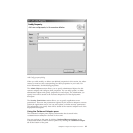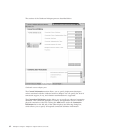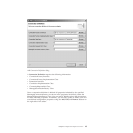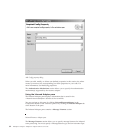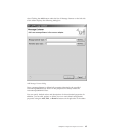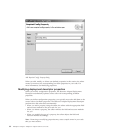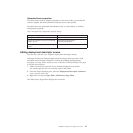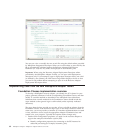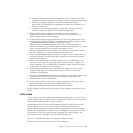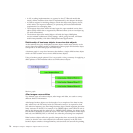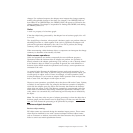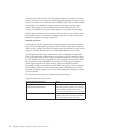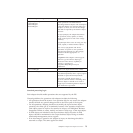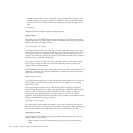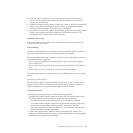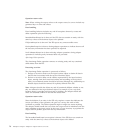b. Identify configuration properties suitable for use by a client for a specific
outbound connection instance (for example, username, password, language).
c. Identify configuration properties for inbound event processing in
general–this will probably be a combination of those you’ve defined in 1a
and 1b for outbound.
d. Establish a list of remaining adapter configuration properties–those not
related or relevant to inbound or outbound configurations.
2. Extend class WBIResourceAdapter and provide accessor methods for
configuration properties defined in 1d. Add these same properties to the
resource adapter deployment descriptor.
3. If the resource adapter supports inbound event processing through the event
manager Quality of Service (QoS) as described later in this user guide, modify
your WBIResourceAdapter subclass to implement interface
WBIPollableResourceAdapterWithXid and provide an implementation of
interface EventStore. If you defined additional inbound properties in 1c, beyond
what is already defined for class WBIActivationSpec, extend
WBIActivationSpecWithXid and update your deployment descriptor to reflect
this new subclass class under the supported activation specs.
4. Extend class WBIManagedConnectionFactory and add accessor methods for any
properties defined in 1A. Add these same properties to the resource adapter
deployment descriptor.
5. Extend classes WBIConnection and WBIInteraction. In your WBIInteraction
subclass, provide logic for processing requests (create, retrieve, update, and
delete operations). In your WBIConnection subclass, simply provide the ability
to generate a new WBIInteraction instance.
6. Extend WBIStructuredRecord and implement the getNext() and extract()
methods. If the adapter is intended to be used in an SCA environment,
implement data bindings.
7. Extend class WBIManagedConnection and provide logic to physically connect and
disconnect to the EIS. In the getConnection methods, simply return the
WBIConnection subclass created above.
8. If you defined additional connection-specific properties in 1b beyond what is
already defined in classes WBIConnectionRequestInfo and
WBIConnectionRequest extend both and add these properties.
See the Adapter Foundation Classes Javadoc for the complete descriptions of the
classes.
Data model
In any system where heterogeneous components exchange data, a common data
model or object format is crucial. With a common data model, system components
know what to send and what to expect in return.
For Websphere Process Server and Websphere Enterprise Service Bus, this data
model is called a business object. The adapters handle data internally, in a
format-independent manner, using the Data Exchange Service Provider Interface
(DESPI). In the WebSphere Process Server and WebSphere Enterprise Service Bus
environment, a data binding produces and consumes the business objects, and
communicates with the adapter using the Data Exchange SPI.
The JCA 1.5 specification defines an optional CCI Record model.
The business object data model provides for the following:
WebSphere Adapter development overview 69



